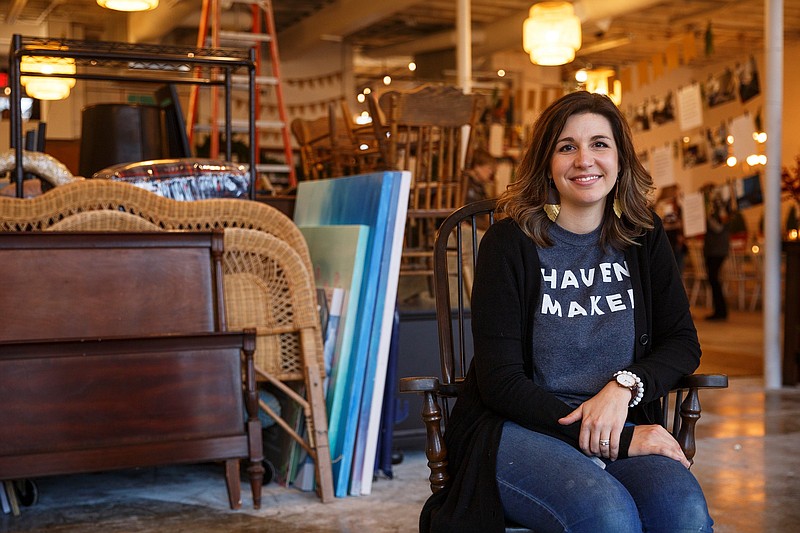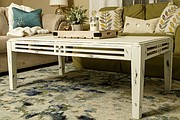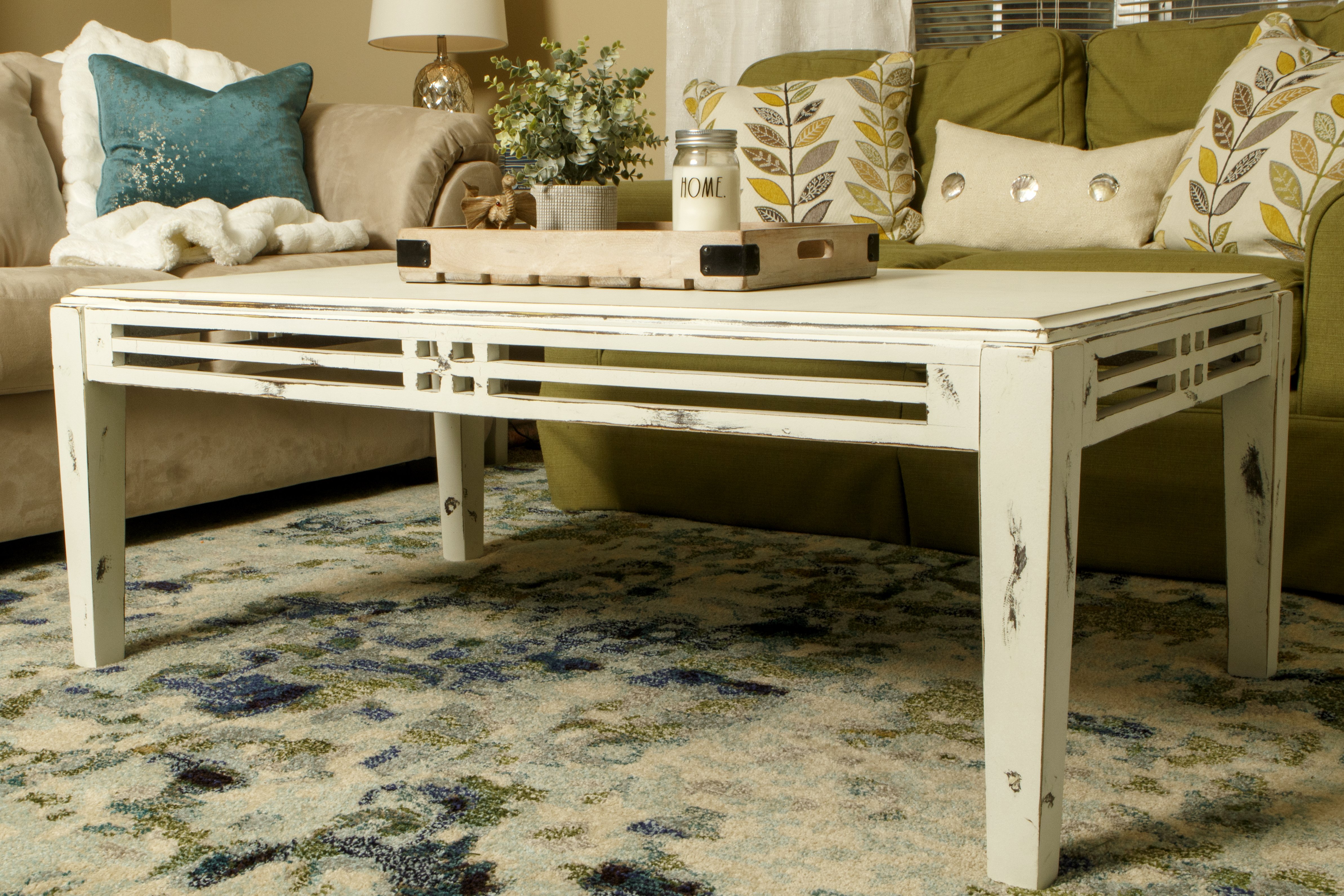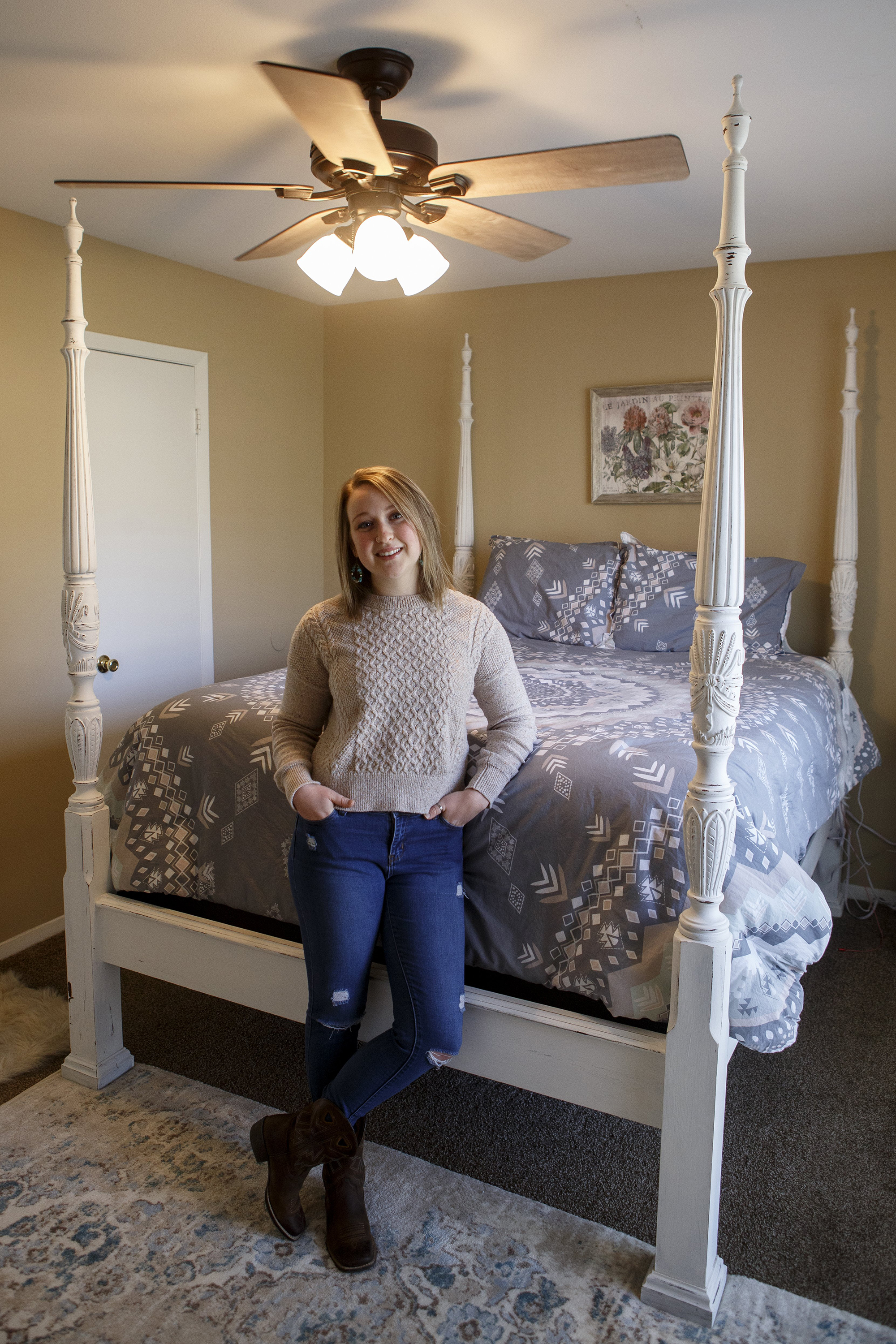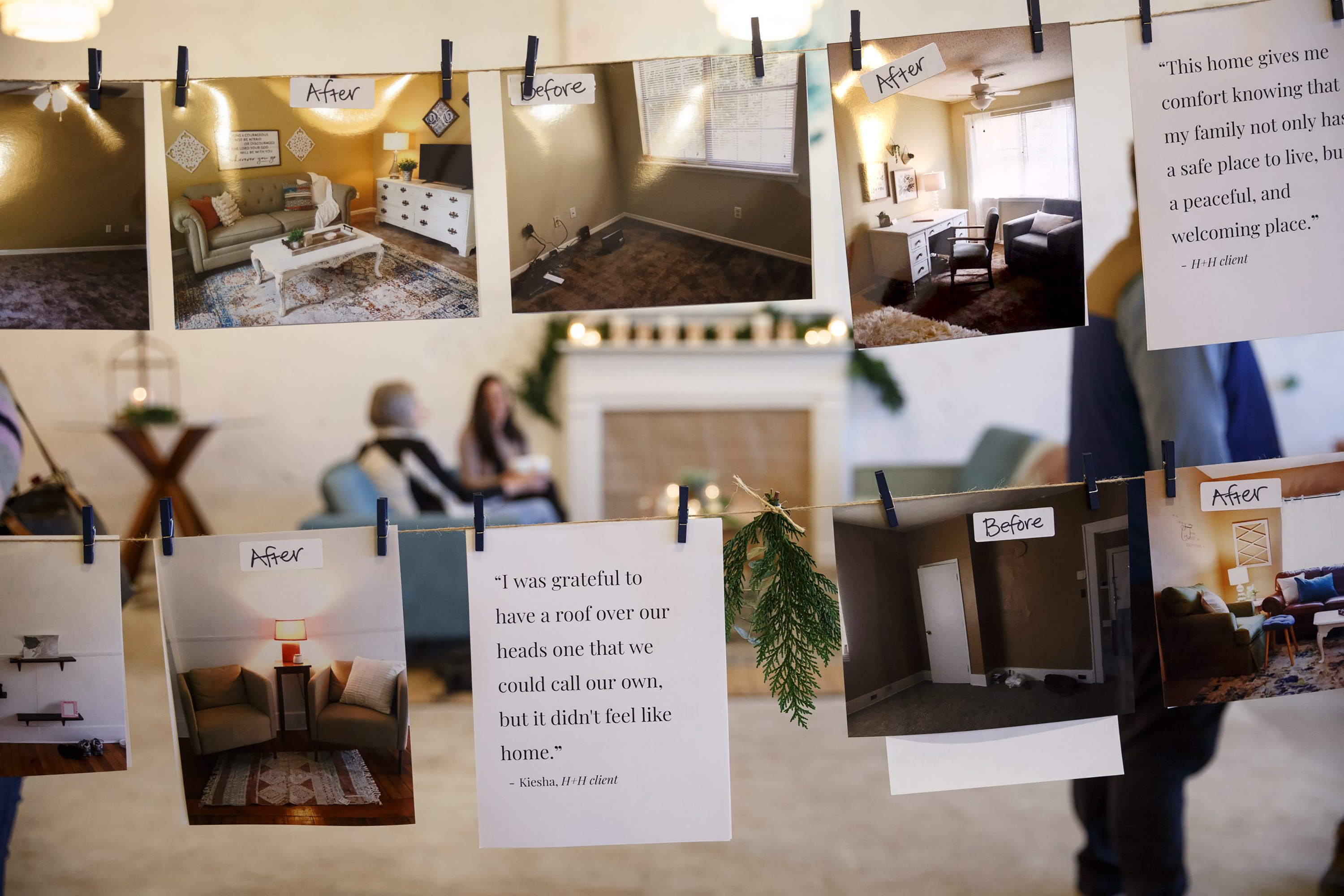When 24-year-old Jessica Freistat first spoke with Kaysie Strickland, president of Homes and Havens, she was intrigued by the local nonprofit's mission to furnish and decorate the living spaces of women who had survived crisis, whether it be from homelessness, sex trafficking or abuse.
Having only recently escaped 11 years of drug and alcohol addiction, Freistat was grateful when Strickland offered to have her team work their magic in her home - though she wasn't so sure much could be done to save her dingy two-bedroom apartment.
Freistat had moved into the apartment with a friend after they'd both spent nearly a year at Renew, a residential ministry operated by Calvary Chapel Chattanooga, whose staff had recommended her to Homes and Havens. Following her eight months at Renew reconnecting with her faith, Freistat was ready to start rebuilding her life. She had accepted a job as an office administrator at Calvary Chapel and started to get her life back on track, but every time she opened the door to her apartment, she found a barren dwelling furnished with little more than two mattresses strewn across the floor and a futon covered with cigarette burns and a seemingly endless supply of dog fur.
"Honestly, it looked like another trap house," Freistat says, recalling the embarrassment she felt each time visitors found themselves sitting on the floor, just like they might at one of the run-down buildings where drugs are illegally sold. "Going right back to the same mess but being a different person it was hard."
She had tried to find thrifty ways to spruce up the space, but with bills, car repairs and other more pressing expenses taking priority, she knew it would take years of saving pennies to achieve anything remotely resembling the country chic feel she envisioned - even with help from Homes and Havens.
"I just thought they would put a few pictures on the wall and add a coffee table around the futon or something," she chuckles.
So when she opened the door to her apartment last September after returning home from a mission trip to Thailand, what she saw left her paralyzed with disbelief.
In place of her tattered futon now sat a plush tan sofa draped with off-white blankets and lined with plump teal pillows. Next to the sofa was an olive-green loveseat loaded with its own assortment of off-white throw pillows.
Freistat marveled as she shuffled across the living room's new area rug, its woolly surface bearing a splattered pattern of earthy blues and greens that complemented the couches beautifully. She bent down to touch the coffee table, which had been given a coat of weathered white paint that exposed the wood underneath to give it a rustic quality she adored.
Walking through the living room, she examined the art hanging on the walls and found herself deeply moved by one that read, "Grateful for the small things, the big things, and everything in between."
Every detail seemed tailor-made to fit her personality and tastes, which she had described as "country princess" during an early consultation with Strickland. And as she migrated to her bedroom, the surprises just kept coming.
Again, Freistat found her heart warmed by a framed piece of art, this one bearing the words of Psalm 46:10, her favorite Bible verse: "Be still and know that I am God." She was also thrilled to discover a full-body mirror that extended a few inches higher than her 5-foot figure. But the feature that truly caught her off guard was the bed from which she would now awake to see those accessories each day.
The queen-size canopy bed dominated the room. Its raised frame lifted the mattress' surface more than 3 feet off the ground. Taller still were its four wooden bedposts, all stretching high enough to nearly touch the ceiling. Upon closer inspection, Freistat could see that its white paint bore the same weathered design as the coffee table, perfecting the country princess motif she had once only been able to dream about.
"I'll never understand how someone could just do this for me. It's such a crazy ordeal - I'm trying not to choke up right now," Freistat says, covering her mouth with a laugh as she looks from the large wooden table filling the dining area to the tiny faux succulent that adds a subtle tranquility to the living room's ambiance.
Whether big, small or somewhere in between, each adornment and trinket carries special meaning to her because it serves as evidence that there are people in the Chattanooga community who care about her - no matter her past.
"It's one thing for people to love the puppies or the suffering children in another country, but for someone to have the heart for the addicts, for someone to have the heart for people who destroyed their own lives with their two hands it's amazing," Freistat says.
DESIGNING HOMES THAT HEAL
Since completing its first home redesign back in 2016, Homes and Havens has helped nearly 100 women and children affected by trauma find peace through reupholstered furniture, cozy pillows and a fresh coat of paint. But the work that takes place behind the scenes bears more complexity than one might think.
Instead of relying on the latest trends to inform the design process, the nonprofit's team looks to research that analyzes how environmental factors like color and clutter affect emotional well-being. Though the studies are often conducted with hospitals and rehabilitation centers in mind, the team uses the data to create personalized interior designs that are free of stress-triggers and able to promote healing by inducing tranquility.
More Info
A Healing Space of Your OwnWhether it’s childhood trauma or just a tough day at work, “we’re all recovering from something,” Strickland says. Here are a few tips to help you transform your own home into a place of healing as you kick off the new year.1. Create a mission statement.Before you start envisioning your perfect space, take a moment to develop a phrase that embodies what you want your home to accomplish. For Strickland, that mission statement was “I want my home to help me heal. I want my home to be comforting to suffering people.” That mission will help bring life to your design, she explains, and will continue to be the foundation of your decor no matter how many times you make changes or adjustments in the future.2. Choose colors that soothe.Colors like red and orange stimulate the brain to “do something, be fast, be quick, rush, rush!” — which may not be the emotion you want to invoke upon arriving home, says Strickland. Instead, she suggests choosing lighter, more organic colors like those you might find out in nature, which persuade the brain to slow down and rest. Some of the examples include earthy browns, leafy greens, creamy whites, or airy blues that resemble the sky. “It’s not threatening, it’s not aggressive; no one’s ever afraid to look up. It just feels peaceful,” she says.3. Bring the outdoors inside.Keeping with the theme of incorporating natural elements into your design, Strickland strongly recommends letting as much natural light into your home as possible, which can be accomplished by switching from heavy curtains to translucent shades, hanging mirrors across from large windows to reflect sunlight, or trimming any trees or bushes outside that may be obstructing incoming light. Strickland also recommends brightening up your home with house plants, which she calls “magic.”4. Declutter, declutter, declutter.Even if you aren’t able to take on a full redesign project, simply taking some time to tidy up will reduce your stress when you come home to a space that’s neat and organized. “Even organizing the places you can’t see — drawers, refrigerator, closet — really does impact the way your home feels,” Strickland says.
Before founding Homes and Havens, Strickland inadvertently discovered the healing power of design in her own life more than five years ago, when nearly losing her parents to addiction swept her into a whirlwind of chaos. The storm was only exacerbated when both she and her husband lost their jobs within six months of each other.
"Going to the emergency rooms and getting late-night calls - we lived in this constant state of emergency," Strickland says, describing the strain placed on her then-new marriage as she fought to convince her parents to seek help. "I felt like I was so broken and shattered from all of the trauma and pain around me. I just wanted a soft place to land for a little bit."
Over the course of a year and a half, with only $20 to work with each month, Strickland repainted all of her drab espresso-brown furniture white. Then, she brought in furniture and decorations incorporating "bright and fresh" colors like blush pink, light blue and navy blue.
"It's calming because you kind of feel like you're outside, where you can breathe," Strickland says. "There's space, you're not trapped. And that goes into play with working with traumatized women, because they have been trapped."
Following her redesign, which included lamps for more intimate lighting and slipcovered sofas that "felt like a hug," Strickland's home became a healing space not just for her, but for friends, family and even strangers who happened to cross the threshold.
"People would come in and say, 'I feel so peaceful here I feel like I could just take a nap on your couch,'" Strickland says. "It was really hitting the mark, and I started thinking, 'Hmm. Maybe there's something to this.'"
More Info
$2,500Total cost to refurbish one room, thanks to discounts and furniture donations from community partners (as well as Strickland’s scrappiness as a self-declared “professional shopper”).20-30Percentage of Homes and Havens’ furniture that comes from donations, though Strickland admits that she’s picky, only accepting quality furniture that fits within her trauma-informed color palette. “If I wouldn’t put it in my biological sister’s house, I’m not putting it in their house,” she says.3-4 weeksAmount of time between the first meeting with the client and the day of installation.3 hoursAmount of time volunteers have to move in furniture and set up space on installation day. “It’s crazy town,” Strickland says. “It is the most exciting adrenaline rush I have ever been a part of.”13Number of local recovery centers that refer women to Homes and Havens.115Number of rooms the nonprofit has refurbished since its creation in 2016.90Number of women and children whose lives have been impacted by the space-creating ministry.95Percentage of women Homes and Havens has helped who have remained on the path to recovery, as opposed to falling victim to relapse, according to Strickland.
Today, Strickland partners with local women's recovery centers, such as Second Life Chattanooga and Chattanooga Room In the Inn, in order to bring that same kind of healing space to recent graduates of their programs. The goal is to complete the transformation while the women are transitioning back into everyday life, when the danger of relapse is often at its highest, she says.
During that time, the women may find a job and get a key to an apartment, only to be triggered when they walk into the empty space, says Strickland, recounting conversations she's had with women she has encountered through the nonprofit.
For victims of sex trafficking, Strickland explains, the barren apartment can often be reminiscent of a pimp's living quarters, which are typically unfurnished, with clothes kept in garbage bags, to allow for easy relocation from one dwelling to another. For those recovering from drug or alcohol abuse, the desolate living conditions may intensify temptation, as coming home to yet another reminder of their struggle to reintegrate into society slowly lessens the appeal of staying sober.
Instead of giving the women a harsh reminder of what their lives once were, the healing spaces that Homes and Havens creates gives them a place to envision what their lives could be. With fully furnished bedrooms set up, some might be able to envision what life might be like if they regained custody of their children. With living areas that exude a feeling of warmth and safety, others may be able to visualize themselves building a life with a new spouse, free from domestic abuse.
"We're just trying to protect their recovery by rewriting the story of what 'home' means," says Strickland. "Home is not a place to be abused. Home is a place to recover and heal and dream and keep growing."
So far, Freistat says, the method has been personally effective. In addition to having a space whose calming decor helps her unwind without a bottle, Freistat says having a home she's proud of enables her to host guests more frequently, creating a sense of accountability.
"Being able to have people come into my home allows me to shed light on every part of my life," she explains. "Whether it's my day-to-day or otherwise, there's no part of my life that's secret."
Even the princess bed contributes to keeping her on the straight and narrow, she adds.
With raised beds a constant feature at her grandmother's house growing up, Freistat had associated the style with a level of prosperity she was beginning to believe she would never obtain, even as she shared the childhood memory with Strickland during their first meeting. But now, Freistat wakes up to that picture of prosperity every morning, imbuing her with an extra dose of confidence for the day.
"These women have done so much inner work in their programs. They've done so much therapy, they've done so much counseling. I wanted their homes to reflect what they felt on the inside now," Strickland says.
Now, as the Homes and Havens' team settles into a new studio space on McCallie Avenue, Strickland says she already has her eyes set on the future.
In addition to training others to develop similar programs in neighboring cities, Strickland hopes to establish a home-goods store that would employ trauma survivors to craft or alter furniture, giving them a new trade and creative outlet.
She also plans to start offering the nonprofit's furnishing and decorating services to the recovery centers it partners with, where limited budgets can make it difficult to create a space that envelops trauma survivors with a sense of comfort.
Most importantly, however, Strickland hopes to rally support from volunteers and donors in order to help her make a difference for more women like Freistat, whose shock at the transformation of her once-bare apartment has still not worn off.
"It's home," Freistat says as she takes one final look at her cozy, country-chic living room. "It finally feels like home."
